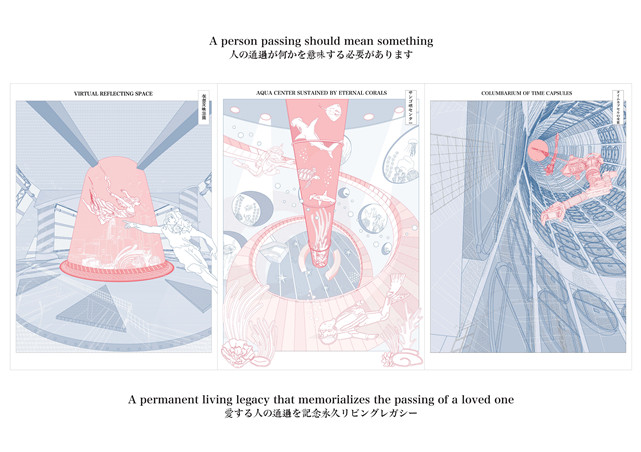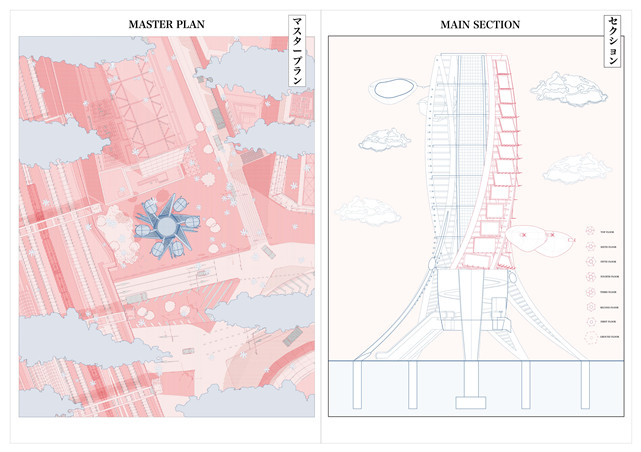当前页面 >> 评审结果
Redefining Cemetery in Tokyo 2030
学生姓名:Chan Cho Fai Anderson、 Lo Hei Ting Haydn
项目名称:Redefining Cemetery in Tokyo 2030
指导老师:
学校名称:香港大学
For the past decade, Tokyo is faced with declining birth rates, shortages of spaces in city, and skyrocketing prices for cemetery plots. In view of these dark sides brought up by the rapid urbanization, radical rethink in how the deceased are buried and commemorated by others are the key issue to this metropolis. Picking up the current situation of Tokyo and foreseeing the near future, the project critiques on this graving situation by proposing a vertical cemetery in 2030 in the most crowded area in Tokyo, Shinjuku, as a hope to give a solution to these uprising social problems, and redesign the burial of the dead into a meaningful, permanent environmental tribute to life.
Aquarium + Cemetery
We believe that composing aquarium and cemetery together can be an avant-garde answer to Tokyo in 2030. Out of expectation, the two programs together can form a loop cycle of regenerating the living from the dead, i.e. displacement of life. Such loop system gives a new value to those past away and create a sustainable underwater ecosystem through the process.
Displacement of Life through time
The standard processing of dead bodies in Japan nowadays is to cremate the body, followed by storage in urns. But this is spatially inflexible to Tokyo, which has high land cost, and also gives burden to the living to monetarily fund it. The proposed design creates new marine habitats for fish and other forms of sea life. Cremated remains are processed into cement mixture dedicated to create artificial reef formations, which is then placed in the predesigned aquarium space. Throughout time, living corals transplant and attract underwater species to migrate. At last, the whole habitat redevelops and creates a more vibrant ecosystem. Hence, life regenerates.

Phases of development
The development of ecosystem takes time, so as the architecture. The project proposed to start in 2017 and terminate in full in 2030, with a few key phases of development, in response to the urbanization of Tokyo itself. Starting from 2017, the main structure, i.e. mega-columns erects in the most crowded spot in Shinjuku. In order to compensate the cost in this early stage, the facade are arrayed with large advertisement billboards to fully make use of the busy circulation around. Other than being a method to sustain the project into full development, this also keep the homogeneity of the architecture itself to the city and buildings around, instead of alienated in the middle of the city. In 2023, the cemetery is built up and the idea of ?displacement? is better known to the public. Applicants flock in due to lower cost compensated by large number of users. Corals are placed to the aquarium, kick staring the next phase development. People started to embrace with this new memorial method. Rental is paid for usage of reflecting spaces and storage of precious stuffs of the dead in time capsule instated. The last phase which ends in 2030 signify the maturation of the ecosystem in the aquarium. The aquarium now is filled with vibrancy and is fully open to the general public, as a new attraction spot and educational institute in the most crowded spot of Shinjuku.